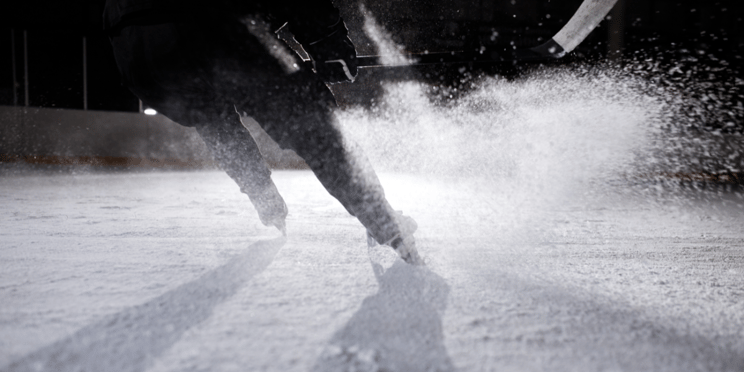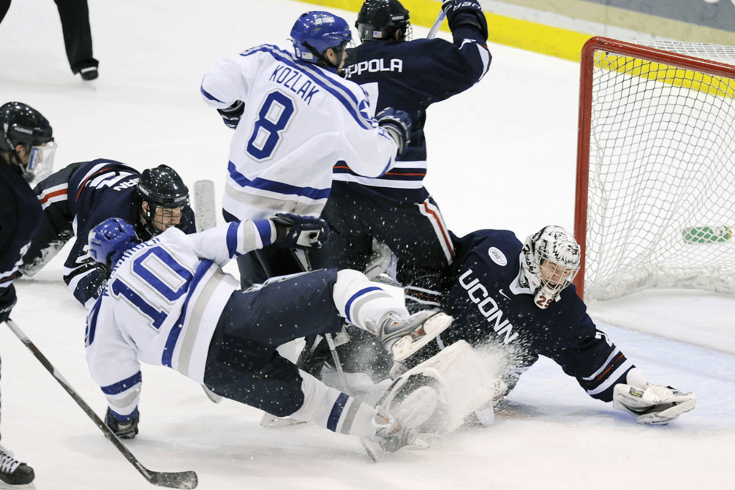NHL Stanley Cup Playoffs
Some people lament that the NHL’s season is too long. They point to the fact that the playoffs run into summer, which seems weird when the sport’s literal foundation is ice. For me, the season isn’t long enough. I go through withdrawal when it ends.
Luckily, as a Pittsburgh Penguins fan, I get to enjoy the playoffs every year since they have the most consecutive years in the playoffs in the modern era. (Just had to brag).
The NHL Stanley Cup Playoffs are made up of the top three teams from each division and four wild card teams, which are the top two teams remaining in each conference. Sometimes one division will have five teams that make the playoffs instead of four. Eight teams in the Eastern conference make up one side of the bracket and eight teams in the Western conference make up the other side. These 16 teams go through three rounds of elimination until there is only one team from each conference left. Each series is a “Best of 7,” which means the first team to get four wins moves on to the next round and the other team is eliminated. There is no losers bracket.The biggest downsides to long seasons with “Best of 7” playoff series are endurance and recovery of players. Many teams have to play seven games to determine the winner of the series. Playing seven games in a row can happen each round, which means one conference champion can play significantly more games than the other. Teams are always looking for ways to help players stay fit, healthy, and spry for as long as possible. It does not matter how good they are on paper during the regular season, tiredness and injury ruin the best players during the playoffs.
Often the teams that go far in the playoffs often have players that perform better than in the regular season and their number of injured players is low. The depth of talent in the NHL these days makes any team in the playoffs dangerous. For the 2021 Stanley Cup Playoffs, one of the worst seeded teams was the Montreal Canadians who ended up just three wins shy of winning the whole thing. They were young, healthy, and energized which when combined with a little bit of luck allowed them to go way farther than anyone expected.
Smart Apparel Can Give You An Edge
Injuries happen in two ways in hockey: a player gets hurt because they get hit by someone or something or they pushed their body too far. It’s hard to control the former when large, strong men are flying around on the ice with shoes strapped to knives and are encouraged to smash other players into the walls that encircle the hockey rink. As you can imagine: injuries happen.
The one thing teams and players can control is their physical fitness. Physical fitness helps to eliminate issues like pulled muscles and torn ligaments. It allows players to play at their peak for longer. Players can play games closer together and not suffer performance loss.Smart apparel can give unique and valuable information on the body’s performance and health. With a better understanding of what the body is doing, players, trainers, and coaches can make more informed decisions on the best ways to get players healthy, keep them healthy, and diagnose injuries when they unfortunately happen.
What is it? How does it work?
Smart apparel is the incorporation of electronics into garments that provides new functionality. Performance sportswear companies are getting more and more innovative with the material science of their fabrics to make them lighter, dry faster, and more durable, but an even greater boost in functionality is adding smarts.
Some of the smarts that Butler Technologies can incorporate are biometric sensors, printed flexible heaters, and force sensing resistors. With these printed electronics you can gain insights into vitals and muscle activity, provide therapeutic relief with EMS and targeted heat, and gain insight into form.
What makes our smarts unique is that we print our electronics with conductive ink that can flex and stretch. Bulky and uncomfortable wires that limit movement are a thing of the past. With our screen printing technology, we can create sensors and heaters that feel similar to a graphic printed on a t-shirt.
Smart Apparel for Hockey
Biometric Compression Shirt & Pants
Hockey athletes are already wearing compression clothing underneath their pads and jerseys. Adding biometric sensors would provide almost zero discomfort or limitations to the athletes while gaining a ton of different types of data on muscle activity, heart rate, body temperature, etc., which can be wireless transmitted to coaching and training staff to review.
Heated Clothing
Hockey is a high-intensity sport that has short windows of full-throttle activity. Due to the ice, the room has to be kept cold to maintain the surface. So players go full out for 60-120 seconds, which causes them to get very sweaty and hot, then come back to the bench to sit and rest before their next shift. Players start to cool off during that time. Having printed heaters in their clothing would allow them to turn on the heat while they are sitting on the bench and then turn it off while on the ice when they are generating their own heat.
If you relied purely on the clothing material to retain heat, the players would overheat on the ice, but if you prioritized keeping the players cool while going all out for their shift, the players would get too cold on the bench. Printed heaters allow each player to warm up when the they need it and turn it off when they are too hot. No more compromise.
Force Sensing Resistor Incorporated Pads
Force sensing resistors can do exactly as the name states: sense force. One big part of hockey is hitting. Players are allowed to use their bodies to slam into other players as long as the correct circumstances are met. This feature of the game serves many purposes (too much to get into in this blog), so being able to hit safely while delivering the most force is a key skill for players. Incorporating force sensing resistors into practice pads would help coaches improve their players’ hitting technique and show how different techniques can provide improved hitting force while protecting the players involved.
Perform Better with Printed Electronics
Remember what I said about endurance being a major factor for teams that succeed in the playoffs? The first game in the first round of the 2022 Stanley Cup Playoffs for the Pittsburgh Penguins against the New York Rangers went to triple overtime. In the playoffs, each overtime is an additional period of hockey unless a team scores, which would immediately end the game. That means they nearly played two full games in straight succession. As much as I credit the Pens’ scoring ability in their win, endurance was an even greater factor. Because of the grueling pace and length of the game, New York made one slip up, one miscalculation, one lapse in judgment, which opened up a scoring opportunity for Pittsburgh and they capitalized.
That game was won by a razor-thin margin. There is a part of each player that is thinking, “What could I have done to gain just the slightest edge?” One great way: smart apparel.
Meet the Author

Grant is an integrated marketing specialist at Butler Technologies. He is a Butler native and studied digital media at Slippery Rock University. He joins the team after spending many years in the non-profit world. He has a passion for technical writing, video production, and innovation.